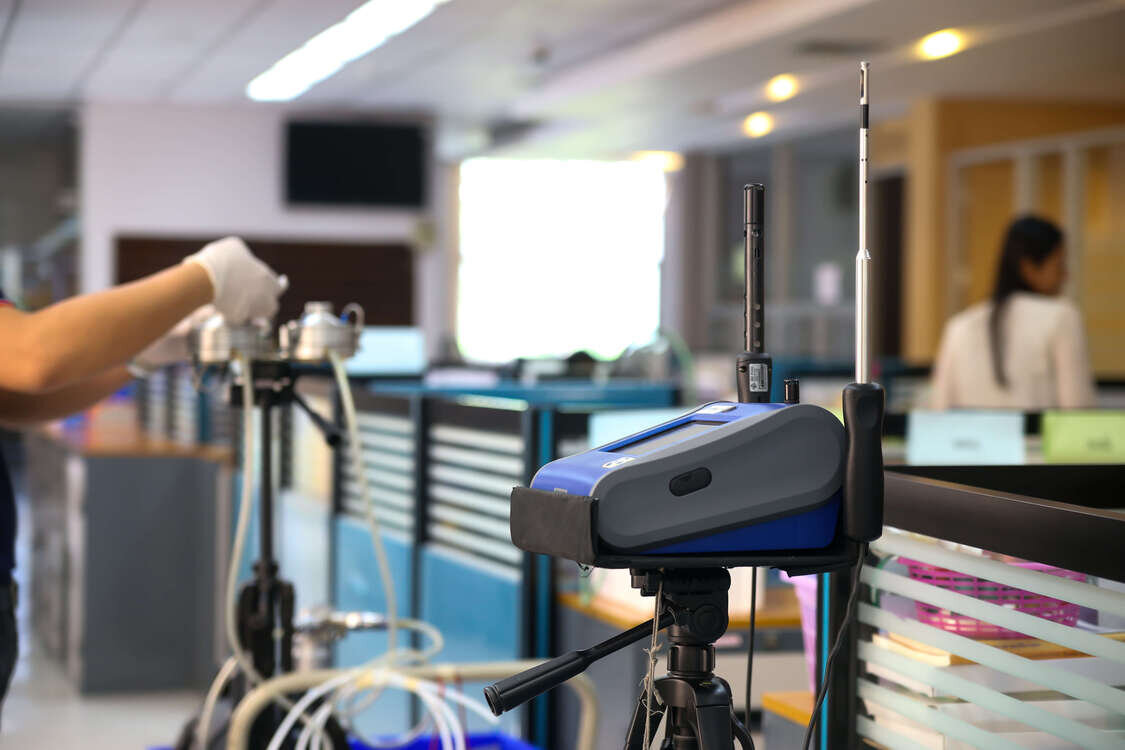Indoor Air Quality (IAQ) Testing
What is Indoor Air Quality?
Indoor air quality is a term used for the air quality we breathe within the indoor environments of buildings and structures where we live every day.
Many pollutants affect the indoor environments of commercial structures or building materials from a myriad of sources.
Sources include:
Mold
Allergens
Bacteria
Avian pathogens
Dust
Dust Mite
Particulate Matter
Metals
Chemicals
Gases
Volatile organic compounds
Indoor environmental quality (IEQ) investigations are assessments of the indoor environment to determine if the indoor structures’ air quality is healthy or polluted.
Our homes are our pride and joy and a place that should feel safe and secure. We know about pollutants like mold, sewage, and asbestos - more often than not they can be seen. What about the pollutants we can’t see? The ones we inadvertently breathe in, due to poor indoor air quality?
We can help you diagnose, treat and understand issues with indoor air quality with our rigorous testing standards. We follow governmental guidelines as stipulated by the EPA (Environmental Protection Agency). They have put together a list of the most common forms of air pollution in homes and commercial buildings. These are:
Asbestos
Biologicals (mold & bacteria)
Tobacco Smoke both from new sources and older, environmental sources
Formaldehyde
Lead
Pesticides
Radon levels
Alongside all these factors, moisture can affect the quality of air indoors. If humidity levels are allowed to get too high or too low, or if there are undetected leaks or small floods. From this moisture, mold, spores, and fungus can grow - and can prove dangerous to health, as well as causing damage to the fabric of the property itself.
As well as the above, when considering indoor air quality - factor in the items you use in and around the home, such as personal care products, cleaners, and even your furnishings like curtains and carpets. All these have the potential to pollute the air you breathe. They can sometimes cause allergic reactions and illnesses.
If you’ve had persistent issues with allergies, breathing difficulties, rashes, headaches, and other respiratory problems, they all have the potential to be related to the poor indoor air quality within the home or workspace.
Prolonged exposure to indoor air pollution can lead to a wide range of health problems including:
Headaches
Fatigue
Dizziness
Nausea
Coughing
Asthma
In certain circumstances, long-term damage to the lungs can be sustained and may cause lung cancer. Poor air quality can also allow for infectious diseases to spread including:
Flu
Covid-19
Measles
Chickenpox
Tuberculosis
Legionnaires’ disease
Chemicals used for cleaning and treating furnishings can be absorbed into surfaces and then ‘released into the air over long periods of time. If you’ve ever smoked, and given up - or been in a space that was used by former smokers, you’ll notice that it’s virtually impossible to completely get rid of the scent of stale tobacco - and that’s because the surfaces in the room have absorbed the chemicals and odors from the smoke and begun to slowly release them over time.
How to improve indoor air quality with professional help
At home, the answer to some indoor air quality problems is to keep your spaces well ventilated by opening windows, and making sure things like filters on air conditioning units are changed regularly. Even the filters on your vacuum cleaner will contribute to the quality of the air you breathe, so making sure they’re hygienic is another important step.
Taking care of issues with indoor air quality in a home or commercial building can often require a different approach that is best tackled by professionals. To get an accurate diagnosis and treatment plan air quality inspection is necessary, the following might be required:
Interview: It’s a good idea to talk to everyone on site about any issues they’ve noticed with air quality or health problems that have occurred.
Visual Inspection: Secondly a thorough visual inspection of the area is recommended to check for adequate ventilation, and look for any issues with mold or flood water.
Baseline Screening: Technology can then be used which can screen for anything that might cause poor indoor air quality, for instance, those that are covered in the list from the EPA. Analysis of these will then make it easier to identify the causes of poor air quality and how best to treat it.
Once an initial inspection and screening have taken place there is a wide range of steps that can be taken to improve issues with air pollution and these can include:
Testing and inspecting for mold samples that may be present in the air and on walls or hard-to-find spaces.
Analyzing ducts or air conditioning systems and HVACS for bacterial growth. This will also include testing to see if there are any leakages in ducts that could possibly be pulling polluted air in.
Testing for volatile organic compounds or chemicals of concern that are considered to pose a risk to health or could damage your surroundings.
MSE Environmental IAQ Inspection Process includes the following steps and procedures
Interview Client on Occupant Issues
Visual Inspection
Air Monitoring & Sampling
HVAC Ventilation & Comfort Parameters
Building Diagnostics
Corrective Action Management Implementation & Recommendations
We provide reliable advice on improving your indoor air quality as well as the overall quality in your home, with professional testing and follow-up work. If you’d like to discuss any part of our indoor air quality testing policies, get in touch today and we’d be happy to consult with you.
For all your indoor air quality needs and a full appraisal of your home or commercial property, get in touch today.
Learn more about Indoor Air Quality by clicking the button below:




